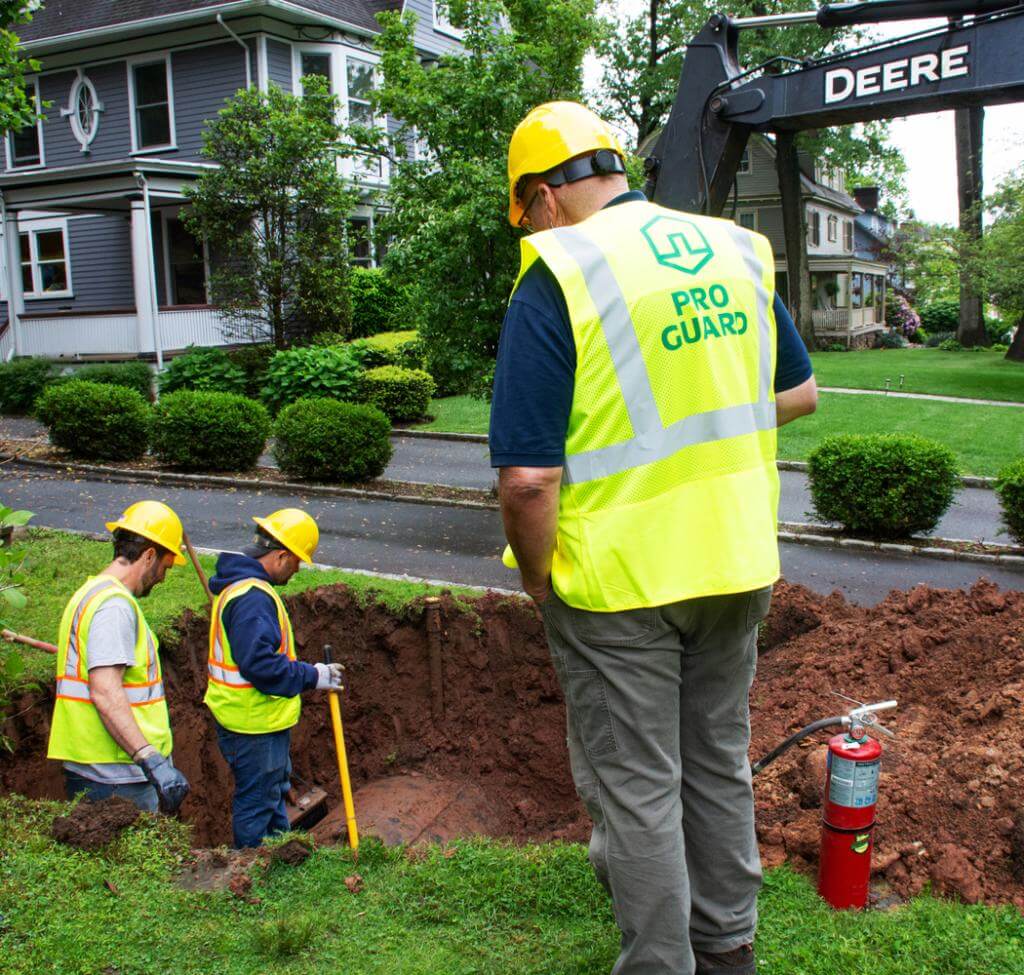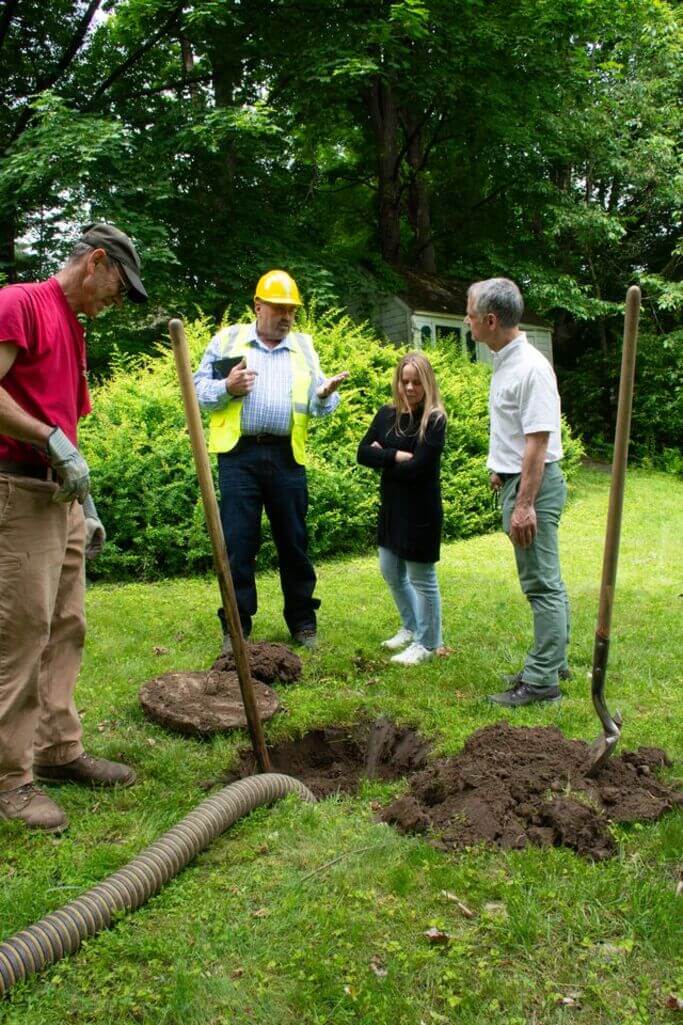ProGuard UnderGround Oil Tank Coverage Plan
An underground oil tank may be a hidden to many homeowners.
However when spills arise, it can be complex, costly to repair, and harmful to the environment.
With ProGuard’s UnderGround Oil Tank coverage plan, you’re covered for any out of sight issue.

What's Covered?
Upto $100,000 in coverage towards an underground oil tank failure in the event of a leak.
Did you Know?
Oil is a cost-effective and economical source of fuel to heat your home in deeply cold, freezing winters
Coverage Summary
ProGuard’s underground oil tank protection plan covers you for the following:
Tank Removal and Disposal
If an oil leak is visible, comprehensive service to remove the tank, collect remaining oil and safely dispose old tank.
Ground Contamination Treatment
Remediation solutions to remove harmful pollutants from soil and groundwater, restoring your property to a safe condition.
Soil Testing and Backfill
Quality backfill services using appropriate materials to restore excavated areas after tank removal. Testing performed and paperwork completed to satisfy regulations. Soil backfill for stability and adequate drainage.
Labor Costs for Tank Removal, Remediation and Testing/Soil Backfill
Full coverage of skilled labor costs for safe and environmentally-compliant tank removal, remediation and soil backfill.
Voluntary Tank Removal Option
Additional benefit option offered to homeowners who want to proactively remove tank but seek protection from potential oil leaks and environmental risks uncovered following removal.
Third Party Liability Coverage
If a leak has expanded to a neighboring property or groundwater system, our coverage includes costs to remediate these properties too.
Did you Know?
Most homeowners insurance policies do not cover oil tank failures or environmental damage. ProGuard does.
Benefits
Financial protection (up to $100,000) on your home’s most essential system.
White glove claims service from ProGuard in times of emergency - you’ll be assigned a ProGuard adjuster to your claim.
Environmentally responsible testing, clean-up, remediation, soil back-fill and disposal that’s compliant with state and local municipal regulations.
Access to ProGuard’s fully vetted network of oil tank and environmental professionals with fast response times.
91% customer retention driven by trust and value. ............................................
Peace of mind for your home’s essential system that can also be transferred upon home sale to new owner.
Ready to protect your home?
Pick a plan in minutes – no long forms, no surprises.
Why Thousands Trust ProGuard
ProGuard helps you avoid the financial nightmare of septic and oil tank failures – backed by 25+ years of trusted protection.

of customers renew our protection plans annually.

underwritten by a nationally recognized carrier.

happy and satisfied customers.

states covered across the United States.



25
Years of
Experience
Why Thousands Trust ProGuard
ProGuard helps you avoid the financial nightmare of septic and oil tank failures – backed by 25+ years of trusted protection.

of customers renew our protection plans annually.

underwritten by a nationally recognized carrier.

happy and satisfied customers.

states covered across the United States.
Frequently Asked Questions
An underground oil tank is hidden in the soil. The only sign of its existence will be a fill pipe and vent pipe above where the tank is located. Aboveground tanks are visible. Even if a tank is situated in a basement below the level of the ground outside – ProGuard views it as an aboveground tank.
All underground tanks, which were typically made of steel and installed decades ago, are now corroding from their contact with the soil and water. Every one will eventually leak, it is just a matter of time. Once oil escapes, it will make its way through the soil towards water courses. If there is a leak, your state or town will have strict rules on cleanup and soil disposal, costing you tens of thousands of you do not have ProGuard coverage.
ProGuard also offers a great way to reassure a homebuyer if you sell your home. Coverage is transferable. Contrary to real estate folklore, there is NO requirement to remove your underground tank in order to sell your house.
There are many to list – and only ProGuard knows how to handle them:
- The first crisis to handle will be how to remove the oil from the bad tank.
- You may have a literal ton of oil in the tank that now is escaping.
- Calling a specialist emergency contractor to pump the oil out will cost thousands.
- Your home has no heat. You now need to find someone to install an aboveground tank.
- You are in a hurry as you have no way to heat your home. The contractor knows this, so you have no power to negotiate price with them. The price goes up.
- The contractor points to all the environmental regulations that have been broken and how onerous the cleanup is.
- Now the bill is heading to five-figures.
- If the oil has escaped to neighboring land you lay be liable to clean up that property too.
- Work starts to remove the tank, but if your soil is sandy or the tank is close to the home – you may need to support the home. The bill approaches six figures.
- The job is often NOT DONE until the DEP says the soil is clean enough.
It varies on the location of the tank and if you are with a partner of ProGuard for delivery of your oil. Coverages start at $471.
Underground Oil Tank Protection Plan provides $100,000 of environmental clean-up coverage. It also contributes $1,500 to the cost of a new tank.
When you enroll, you need to have a soil test performed that is to our standards to confirm your tank is not leaking oil before your enrollment is accepted. Call us to find out more about this requirement.
Almost certainly not. Tanks fail due to corrosion / wear and tear, which is a general exclusion in most policies, and many policies specifically exclude the consequences of oil contamination for any reason as well.
Call us first to discuss your circumstances and how to get a soil test performed. We only accept soil tests from certain laboratories.
Our typical coverage lasts one year.
Yes, there is a deductible of $2,500.
Don’t worry, you’re in safe hands. We’ve been in business for over 25 years and we’ve seen it all.
You should immediately contact us to file a claim either online or by calling us on 888-354-0677. Once a claim has been filed, you will be assigned an expert claims handler who will request specific information. We will then assign one of our field experts to your case, and they will be in touch with you to project manage your claim to successful close in a timely manner and to the standards that we demand from our technician and contractor network.
Oil companies specialize in delivering oil – we specialize in protecting oil tanks. Your oil company might offer you a ‘tank protection program’ – if it is not ProGuard then it is likely a shallow coverage, often only offering a discount on a replacement tank, and no clean-up or environmental remediation. Nor does it offer the expertise, independence or impartiality that we offer in representing you when a claim occurs.Importantly, these plans are not underwritten by a large insurance company and so you can’t be 100% sure they will be there to pay your claim. Look for the name ‘ProGuard’ before you buy!
The lifespan of an underground oil tank depends on soil conditions and tank material. Steel tanks may last twenty to thirty years while modern fiberglass varieties can last longer. Because aging tanks can develop issues over time many homeowners explore underground oil tank warranty style protection options and educational resources that help them prepare for long term maintenance needs.
Changes in fuel usage, outdoor oil odors or staining around the fill area can be signs a tank needs a professional look. Most homeowners simply stay aware of maintenance schedules and keep notes about their system. It is also common for people to research things like underground oil tank warranty information online so they can be better prepared as a tank gets older.
Buyers usually ask about tank age, maintenance and inspection records. Clear documentation can make the real estate process smoother. During this stage buyers and sellers often review general information about underground oil tank insurance and environmental guidelines simply to understand expectations and common practices.
Not necessarily. General home inspections may not include tank detection unless it is visible. Some homeowners use specialists who scan or test soil around suspected locations. People often come across underground oil tank warranty articles or homeowner forums during this process because they are trying to learn what others have done.
Yes. Moisture, soil acidity and temperature swings can affect how long a tank lasts. For this reason many homeowners keep up on inspections and browse information about long term care and underground oil tank insurance as part of their research into keeping a property safe.
Steel tanks typically last twenty to thirty years depending on soil conditions, and modern fiberglass tanks may last longer. As tanks age, maintenance planning and underground oil tank coverage considerations become more relevant for long term property protection.
Yes. Regulations differ by state and local authority. Some areas require documentation, certified removal and soil testing, while others have more flexible standards. It is important to follow local environmental guidance and maintain appropriate underground oil tank coverage and inspection records when applicable.

